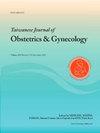分步CO2激光治疗产后外阴阴道萎缩的疗效:一项前瞻性观察研究
IF 2
4区 医学
Q2 OBSTETRICS & GYNECOLOGY
引用次数: 0
摘要
目的探讨CO2激光治疗对产后哺乳期妇女阴道健康及外阴阴道萎缩(VVA)症状的影响。还确定了缓解相关症状所需的治疗次数。材料与方法本前瞻性研究纳入了继续母乳喂养并出现VVA相关症状的产后健康妇女。所有参与者使用Lumenis AcuPulse系统和FemTouch™手机进行连续三次CO2激光治疗,间隔四周。每次激光治疗后,评估VVA症状的严重程度和阴道健康指数(VHI)评分作为主观和客观结果。将VHI评分和VVA症状严重程度的变化与基线数据进行比较,以检测显著改善的开始。结果30例有VVA症状的产后母乳喂养妇女完成了疗程和相关测量。年龄从25岁到41岁不等,平均年龄为34.6岁。初始激光治疗前母乳喂养的平均持续时间为3.3个月。阴道干燥和性交困难是激光治疗前最令人烦恼的VVA症状,在两到三次治疗后得到缓解。第一次治疗后VHI评分达到非萎缩水平(评分后介质:18 vs.前介质:14,p <;0.05),并持续稳定。结论采用CO2分形阴道激光治疗产后外阴阴道萎缩是有效的。在第一次和第二次激光治疗后分别检测到客观和主观的改善。在这些产后母乳喂养的年轻女性人群中,连续两次激光治疗在临床上足以缓解VVA相关症状。本文章由计算机程序翻译,如有差异,请以英文原文为准。
The efficacy of fractional CO2 laser treatment on postpartum vulvovaginal atrophy: A prospective observational study
Objective
To investigate the changes of vaginal health and vulvovaginal atrophy (VVA) symptoms following CO2 laser treatment in postpartum breastfeeding women. The number of treatment sessions required to alleviate related symptoms was also determined.
Materials and methods
Postpartum healthy women who continued breastfeeding and suffered from VVA related symptoms were included in this prospective study. All the participants underwent three consecutive fractional CO2 laser treatments using Lumenis AcuPulse system with FemTouch™ handpiece at four-weeks interval. Following each laser treatment, the severity of VVA symptoms and Vaginal Health Index (VHI) score were assessed as subjective and objective outcomes. The changes in VHI score and VVA symptom severity were compared with baseline data to detect the onset of significant improvement.
Results
Thirty postpartum breastfeeding women with VVA symptoms completed the treatment courses and associated measurements. Their age ranged from 25 to 41 with an average of 34.6 years. The mean duration of breastfeeding prior to the initial laser treatment was 3.3 months. Vaginal dryness and dyspareunia were the most bothersome VVA symptoms prior to laser treatment and alleviated after two to three treatment sessions. The significant change of VHI score reaching non-atrophic level was found after the first treatment (media of score post:18 vs. pre:14, p < 0.05) and sustained stable through the following two treatments.
Conclusion
Application of fractional CO2 vaginal laser on the management of postpartum vulvovaginal atrophy was proven effectively in our study. Objective and subjective improvements were detected after the first and second laser treatment, respectively. Two consecutive laser treatment sessions were clinically sufficient to alleviate VVA related symptoms in these young female population under postpartum breastfeeding.
求助全文
通过发布文献求助,成功后即可免费获取论文全文。
去求助
来源期刊

Taiwanese Journal of Obstetrics & Gynecology
OBSTETRICS & GYNECOLOGY-
CiteScore
3.60
自引率
23.80%
发文量
207
审稿时长
4-8 weeks
期刊介绍:
Taiwanese Journal of Obstetrics and Gynecology is a peer-reviewed journal and open access publishing editorials, reviews, original articles, short communications, case reports, research letters, correspondence and letters to the editor in the field of obstetrics and gynecology.
The aims of the journal are to:
1.Publish cutting-edge, innovative and topical research that addresses screening, diagnosis, management and care in women''s health
2.Deliver evidence-based information
3.Promote the sharing of clinical experience
4.Address women-related health promotion
The journal provides comprehensive coverage of topics in obstetrics & gynecology and women''s health including maternal-fetal medicine, reproductive endocrinology/infertility, and gynecologic oncology. Taiwan Association of Obstetrics and Gynecology.
 求助内容:
求助内容: 应助结果提醒方式:
应助结果提醒方式:


